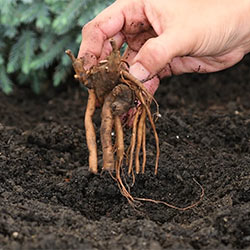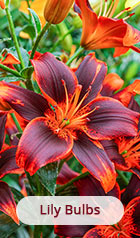Daisy flowers are perfect for areas of your garden that receive full sun or partial shade. Plant them in large groups or smaller plantings. Today's gardeners can choose daisy plants in different hues, from the classic white and yellow, to ones with blues, orange, and yellow petals. All daisy flowers will brighten your garden when they bloom for weeks. Their sturdy stems make them a great choice for cut flowers too. Cut a few and create a lovely bouquet. Be sure to check out our
care tips for daisies for more information. Buy daisy plants from Michigan Bulb today!
Can daisies be grown indoors?
Daisies perform best when given lots of space for their clumping roots to grow, as well as plenty of sunshine. However, some varieties of daisies can be grown in containers indoors. Make sure to give them a fairly deep container, as these perennials grow long roots. Place your potted daisies in a window that receives plenty of sun in the morning. Most daisies require less afternoon sun, and may need to be moved if you notice the hot afternoon rays are scorching their leaves. Water regularly, but don't overwater. A good rule of thumb is that the top one-half inch of soil should be allowed to dry out in between waterings.
Should daisy blooms be deadheaded?
Deadheading your daisy plants can extend their bloom time and give you a second round of flowering. Daisies bloom in the summer, and will keep flowering until fall with proper upkeep. The best time to deadhead each flower occurs before it has died back completely, so deadhead your flowers as the blooms begin to fade.
Deadheading daisy flowers is simple—you need only remove the bud and petals. While some gardeners pinch off daisy blooms, the best results come from using sharp scissors or clippers, to avoid pulling or damaging the stem. If your blooms have died back significantly, cut them down to the point where the stem splits from each other.
When should I plant daisy bulbs?
Daisies, like most clumping perennials, should be planted in the spring. Plant your daisies after all threat of frost has passed, but before the days lengthen and the ground warms completely. By giving your flowers time to get established before the active growing season, you'll set them up for excellent success.
Daisies may need to be divided occasionally in order to keep the plants from becoming overcrowded. Fall is the best time for division, as it allows the divided plants to gain nutrients from the soil and settle into their new locations through the winter. Digging 4-5" away from the plants and deep enough to be under their roots, you can lift clumps of daisies to be separated into smaller clumps for replanting. Shake off as much dirt as possible and then 'tease' the roots apart with your hands or, using a clean, sharp knife, cut each large clump into several smaller ones. You can now space them out, or replant some of the daisies in a totally separate part of the landscape.
How much water do daisies need?
Daisies are drought tolerant once they are established, but be sure to water them regularly during their first year or two. For the first growing season, water your daisies once per week. After that time period, they only need to be watered if they receive less than one inch of rain during the week. Daisies are happy in relatively dry soil, thanks to their hardy nature.
What type of soil should daisies be planted in?
Daisies can handle fairly dry or sandy soil, and these hardy plants can take the heat of full sun when planted in the garden. Break up your soil before planting your daisies, and mix in compost when you initially plant the roots. After planting, daisies require very little care.






















